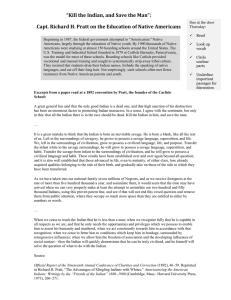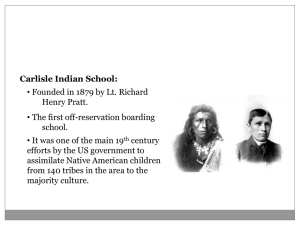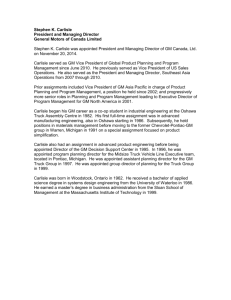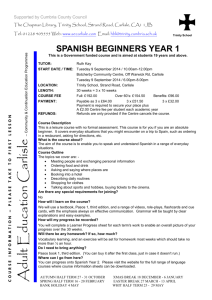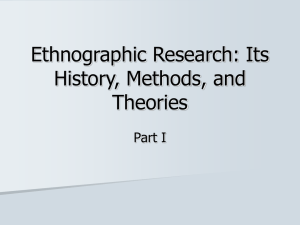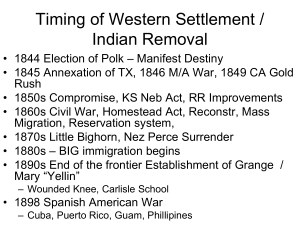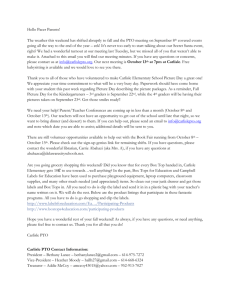Boarding School Documents Carlile Docs (2)
advertisement
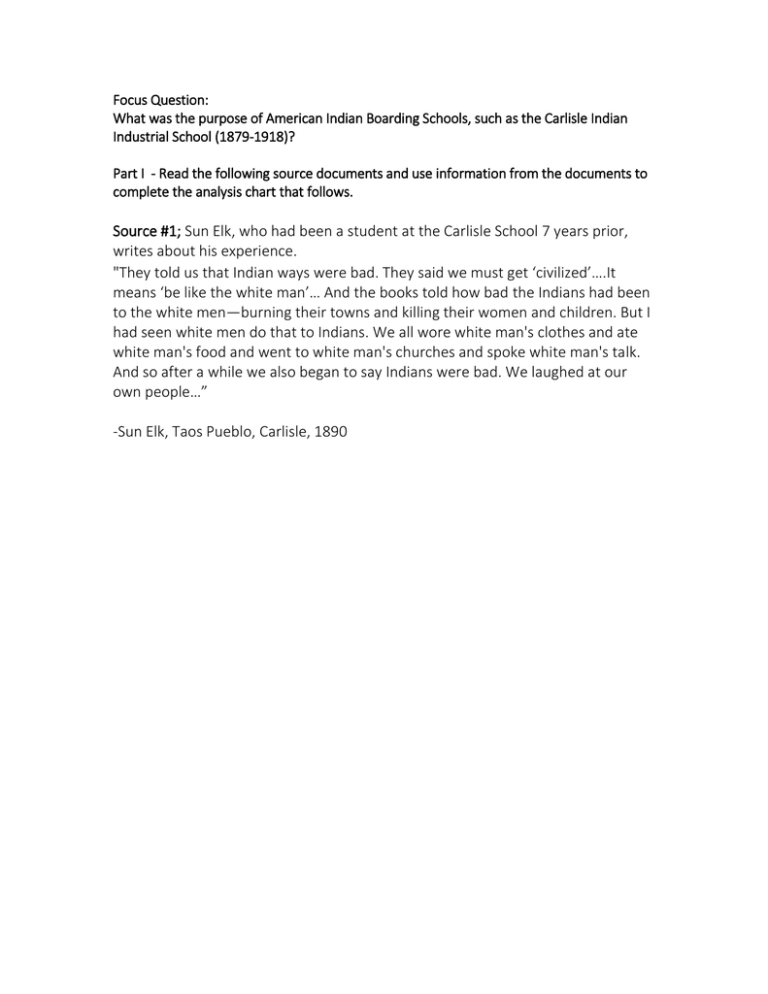
Focus Question: What was the purpose of American Indian Boarding Schools, such as the Carlisle Indian Industrial School (1879-1918)? Part I - Read the following source documents and use information from the documents to complete the analysis chart that follows. Source #1; Sun Elk, who had been a student at the Carlisle School 7 years prior, writes about his experience. "They told us that Indian ways were bad. They said we must get ‘civilized’….It means ‘be like the white man’… And the books told how bad the Indians had been to the white men—burning their towns and killing their women and children. But I had seen white men do that to Indians. We all wore white man's clothes and ate white man's food and went to white man's churches and spoke white man's talk. And so after a while we also began to say Indians were bad. We laughed at our own people…” -Sun Elk, Taos Pueblo, Carlisle, 1890 Source #2: These 2 photographs show a group of Apache children when they arrived at the Carlisle school in 1886, and then 4 months later. Apache children arriving at Carlisle School, Pennsylvania, 1886 The same group of youth, 4 months later. Source #3: This is an excerpt from a paper written by Richard H. Pratt, founder of the Carlisle School. He read this paper at a convention in 1892. A great general has said that the only good Indian is a dead one, and that high sanction of his destruction has been an enormous factor in promoting Indian massacres. In a sense, I agree with the sentiment, but only in this: that all the Indian there is in the race should be dead. Kill the Indian in him, and save the man…. It is a great mistake to think that the Indian is born an inevitable savage. He is born a blank, like all the rest of us. Left in the surroundings of savagery, he grows to possess a savage language, superstition, and life. We, left in the surroundings of civilization, grow to possess a civilized language, life, and purpose. Transfer the infant white to the savage surroundings, he will grow to possess a savage language, superstition, and habit. Transfer the savage-born infant to the surroundings of civilization, and he will grow to possess a civilized language and habit… Carlisle fills young Indians with the spirit of loyalty to the stars and stripes, and then moves them out into our communities to show by their conduct and ability that the Indian is no different from the white or the colored, that he has the inalienable right to liberty and opportunity that the white and the negro have. Carlisle does not dictate to him what line of life he should fill, so it is an honest one. It says to him that, if he gets his living by the sweat of his brow, and demonstrates to the nation that he is a man, he does more good for his race than hundreds of his fellows who cling to their tribal communistic surroundings. . . . Richard H. Pratt, founder of the Carlisle School, 1892 Source #4: This sign hangs in front of the Carlisle School cemetery. It was erected in 2003 by the Pennsylvania Historical and Museum Commission. Marker in front of Carlisle School Cemetery, Carlisle, Pennsylvania
